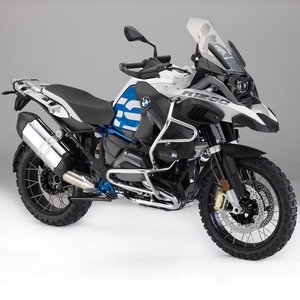BMW R 1200 GS Adventure (2006–2009): The Globetrotter’s Ultimate Companion
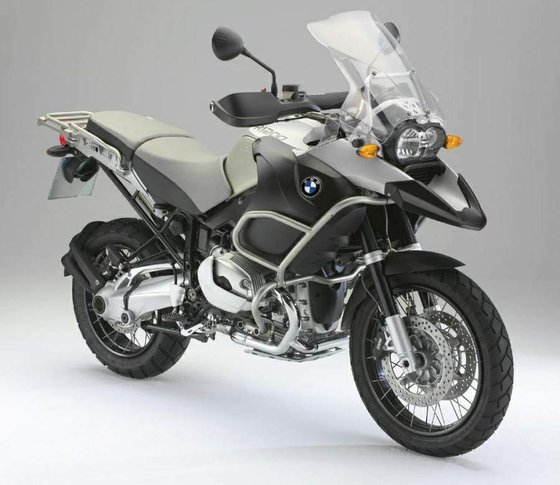
When BMW introduced the R 1200 GS Adventure in 2006, it wasn’t just launching a motorcycle—it was unleashing a philosophy. Designed for riders who view highways as mere suggestions and dirt trails as invitations, this machine redefined what an adventure-touring bike could be. From the Sahara to Siberia, the R 1200 GS Adventure became synonymous with relentless capability, and after spending time with this iconic Boxer-powered beast, it’s easy to see why.
The Heart of the Adventure: Engine and Performance
At the core of the R 1200 GS Adventure lies its 1,170 cc air/oil-cooled Boxer twin. With 98–105 HP (73–77 kW) and 115–120 Nm (84.8–88 lb-ft) of torque, this engine isn’t about raw speed—it’s about unstoppable momentum. The horizontally opposed cylinders give the bike a distinct character: the low-center-of-gravity thrum at idle transforms into a purposeful growl as you twist the throttle.
Riding this machine feels like partnering with a seasoned expedition leader. The torque curve is broad and forgiving, peaking at 5,500–6,000 rpm, which means you’re rarely caught in the wrong gear. On paved twisties, it pulls eagerly from 3,000 rpm, while off-road, the tractable power lets you crawl over rocks or slog through mud without drama. The shaft drive—a hallmark of BMW’s GS lineage—eliminates chain maintenance hassles, though purists might miss the visceral feedback of a chain-driven bike.
The six-speed transmission is robust but occasionally clunky, particularly when downshifting to first. Still, the ratios are well-spaced, with sixth gear acting as a relaxed overdrive for highway cruising. At a steady 120 km/h (75 mph), the engine hums at 4,000 rpm, and the 33-liter fuel tank delivers a staggering 750 km (465 mi) range—enough to outlast most bladders.
Chassis and Suspension: Confidence on Any Terrain

BMW’s Telelever front suspension and Paralever rear setup are engineering marvels. The Telelever’s 41 mm stanchions and 210 mm (8.3 in) of travel absorb potholes like a sponge, while the system’s anti-dive特性 keeps the front end stable under hard braking. At the rear, the Paralever’s 220 mm (8.7 in) of travel and hydraulically adjustable preload handle everything from solo highway rides to fully loaded expeditions.
Weighing in at 256 kg (564 lbs) wet, the GS Adventure isn’t light, but it disguises its heft brilliantly. The Boxer’s low weight distribution and narrow profile make it surprisingly nimble on tight trails. Stand up on the pegs, and the bike transforms—the wide aluminum footpegs and upright ergonomics inspire confidence, even when tackling axle-deep ruts.
The seat height—890–910 mm (35.0–35.8 in)—is daunting for shorter riders, but the narrow front section helps. For context, I’m 175 cm (5'9") and could flat-foot at the lower setting, though uneven terrain demands careful footing.
Ergonomics and Touring Prowess
This is where the GS Adventure shines. The adjustable windshield channels airflow cleanly over the rider’s helmet, reducing fatigue on long hauls. The optional heated grips (a godsend in alpine passes) and spacious seat—firm yet supportive—make 10-hour days feasible.
BMW’s focus on practicality is everywhere:
- Handguards shield against debris and cold winds.
- Stainless-steel crash bars protect the engine and tank during tip-overs.
- Aluminum pannier mounts integrate seamlessly with BMW’s luggage system.
The dashboard, while basic by today’s TFT standards, provides essential data: fuel range, ambient temperature, and gear position. The analog tachometer and speedometer are easy to read at a glance.
Competition: How Does It Stack Up?
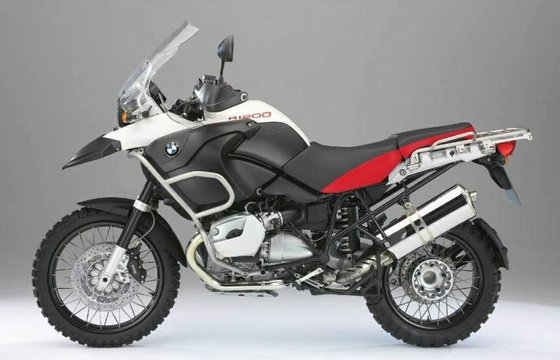
In the mid-2000s, the adventure-touring segment was heating up. Let’s see how the GS Adventure fared against its rivals:
1. Honda Africa Twin (XRV750)
Honda’s V-twin legend was lighter (223 kg / 492 lbs) and nimbler off-road but lacked the BMW’s touring refinements. The Africa Twin’s 680 cc engine (50 HP) felt underpowered on highways, and its 23-liter tank couldn’t match the GS’s range.
2. KTM 990 Adventure
KTM’s 999 cc V-twin delivered 98 HP and sharper off-road performance, thanks to its 21-inch front wheel and aggressive suspension. However, the KTM’s vibey engine and cramped ergonomics made it less appealing for long-distance comfort.
3. Triumph Tiger 955i
The Tiger’s inline-triple offered smoother power delivery and a lower seat height (840 mm / 33 in), but its chain drive and smaller 20-liter tank required more maintenance and fuel stops.
Verdict: The GS Adventure struck a unique balance. It wasn’t the best at any one thing but excelled as a jack-of-all-trades—a true “round-the-world” tool.
Maintenance: Keeping the Adventure Alive
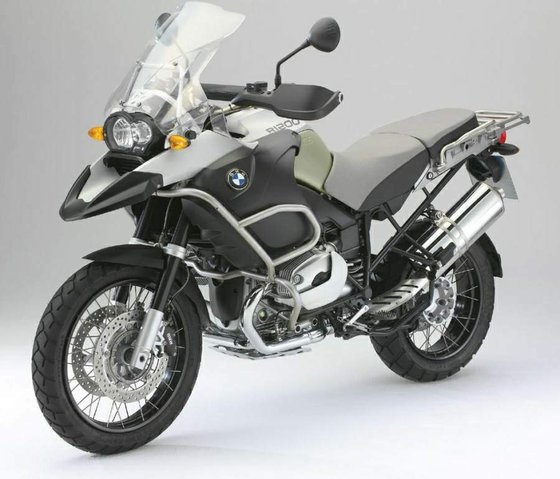
Owning a GS Adventure is a commitment, but with proper care, these bikes routinely surpass 200,000 km (124,274 mi). Here’s what every owner should know:
Key Service Intervals
- Oil Changes: Every 10,000 km (6,214 mi) using 4.0L of 15W-50 (API SJ). Don’t skip the filter!
- Valve Adjustments: Every 20,000 km (12,427 mi). Intake: 0.15 mm (0.006 in), Exhaust: 0.30 mm (0.012 in) (cold engine).
- Final Drive Oil: Replace 180 ml of 75W-90 GL-5 annually. Neglect this, and the shaft drive’s $1,200 rebuild will hurt.
- Tire Pressure: 2.2 bar (32 psi) front / 2.5 bar (36 psi) rear when solo. Add 0.3 bar for heavy loads.
Common Upgrades
- Suspension: The stock suspension handles well, but aftermarket options like Öhlins improve off-road control.
- Exhaust: Swap the bulky OEM can for a lighter Akrapovic system (featured on the Heroes Legend Edition).
- Lighting: Auxiliary LED pods enhance visibility on remote trails.
Troubleshooting Tips
- ABS Quirks: Early Integral ABS systems can feel grabby. Bleed brakes with DOT 4 fluid yearly.
- Clutch Wear: The single-plate dry clutch lasts ~80,000 km (49,710 mi). Replace with a reinforced kit if towing.
Conclusion: Why the R 1200 GS Adventure Still Matters

Two decades later, the 2006–2009 GS Adventure remains a benchmark. It’s not perfect—the weight intimidates, and the tech feels dated—but its blend of durability, comfort, and versatility is unmatched. For riders eyeing Patagonia or simply seeking a trusty daily companion, this BMW is more than a motorcycle; it’s a passport to the unknown.
And when the call of the wild inevitably demands upgrades—whether crash bars, performance shocks, or a fresh set of Bridgestone Battlax tires—MOTOPARTS.store has you covered. Because every great adventure deserves a well-prepared steed.
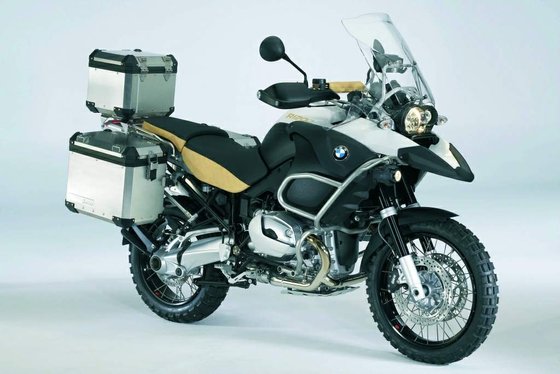




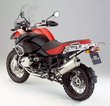
Specifications sheet
| Engine | |
|---|---|
| Stroke: | Four-stroke |
| Max power: | 77 kW | 103.0 hp |
| Max torque: | 120 Nm |
| Fuel system: | Electronic fuel injection (BMS-K+) |
| Max power @: | 7750 rpm |
| Displacement: | 1170 ccm |
| Max torque @: | 6000 rpm |
| Bore x Stroke: | 101 x 73 mm (4.0 x 2.9 in) |
| Configuration: | Oposite |
| Cooling system: | Air/oil-cooled |
| Compression ratio: | 11.0:1 |
| Number of cylinders: | 2 |
| Dimensions | |
|---|---|
| Wheelbase: | 1507 mm (59.3 in) |
| Dry weight: | 223 |
| Wet weight: | 256 |
| Seat height: | 890–910 mm (35.0–35.8 in) |
| Fuel reserve: | 4 L (1.1 US gal) |
| Overall width: | 915 mm (36.0 in) |
| Overall height: | 1450 mm (57.1 in) |
| Overall length: | 2210 mm (87.0 in) |
| Ground clearance: | 165 mm (6.5 in) |
| Fuel tank capacity: | 33 L (8.7 US gal) |
| Drivetrain | |
|---|---|
| Final drive: | shaft |
| Gear Ratios: | 1st 1.583 / 2nd 1.259 / 3rd 1.033 / 4th 0.903 / 5th 0.903 / 6th 0.805:1 |
| Transmission: | 6-speed manual |
| Electrical | |
|---|---|
| Battery: | 12V 14Ah |
| Alternator: | 720 W |
| Maintainance | |
|---|---|
| Rear tire: | 150/70 z-17 |
| Engine oil: | 15W50 |
| Front tire: | 110/80 z-19 |
| Brake fluid: | DOT 4 |
| Spark plugs: | NGK DCPR8EKC or NGK DCPR8EIX |
| Forks oil type: | SAE 10W |
| Forks oil capacity: | 1.3 |
| Engine oil capacity: | 4.0 |
| Gearbox oil capacity: | 0.8 L (75W-90 GL-5) |
| Final drive oil capacity: | 0.18 L (75W-90 GL-5) |
| Engine oil change interval: | Every 5000 km or 2 years |
| Valve clearance (intake, cold): | 0.15 mm |
| Valve clearance check interval: | 24,000 km (15,000 mi) |
| Valve clearance (exhaust, cold): | 0.30 mm |
| Recommended tire pressure (rear): | 2.5 bar (36 psi) solo / 2.9 bar (42 psi) loaded |
| Recommended tire pressure (front): | 2.2 bar (32 psi) solo / 2.5 bar (36 psi) loaded |
| Chassis and Suspension | |
|---|---|
| Frame: | Tubular steel frame with load-bearing engine |
| Rear brakes: | 1 x 265 mm disc, 2-piston caliper (ABS optional) |
| Front brakes: | 2 x 305 mm discs, 4-piston calipers (ABS optional) |
| Rear suspension: | Paralever single-sided swingarm with adjustable preload and rebound damping |
| Front suspension: | Telelever, 41mm stanchion, preload adjustable (9 settings) |
| Rear wheel travel: | 220 mm (8.7 in) |
| Front wheel travel: | 210 mm (8.3 in) |



